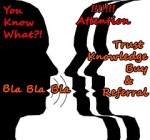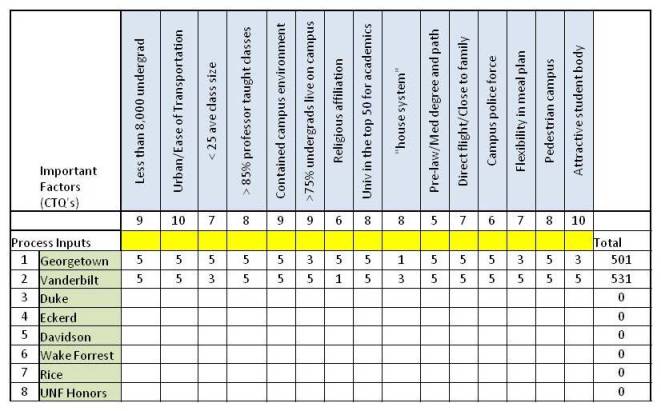I Need Some Magic
 Although Tom Connellan’s book, “Inside the Magic Kingdom” isn’t new, it is very fresh for the time. The book describes the secret sauce is for the mega amusement company to continue to have loyal customers who come back over and over again and don’t mind paying for the experience. It’s not about adorable creatures, mystical heroes or the most thrilling rides in an amusement park. As a matter fact you can find all of that less than 5 miles away, but the loyal Disney followers pass by it to find the magic. The magic is a state of mind. Everyone’s state of mind – the customers, the employees, the vendors, the creators – everyone.
Although Tom Connellan’s book, “Inside the Magic Kingdom” isn’t new, it is very fresh for the time. The book describes the secret sauce is for the mega amusement company to continue to have loyal customers who come back over and over again and don’t mind paying for the experience. It’s not about adorable creatures, mystical heroes or the most thrilling rides in an amusement park. As a matter fact you can find all of that less than 5 miles away, but the loyal Disney followers pass by it to find the magic. The magic is a state of mind. Everyone’s state of mind – the customers, the employees, the vendors, the creators – everyone.
I would propose that the key’s to Disney’s success that Connellan reveals, apply to just about any business interested in building passionate customer loyalty. The book is chock full of mind shifting ideas. Here are the concepts and just some of the great quotes that might just get you and your teams thinking.
1. Your competition may not be who you think. “If someone else satisfies customers better than, no matter what type of business, you suffer by comparison.”
2. Pay fantastic attention to detail. “Quality is not about limited possibilities. Quality is about unlimited possibilities.”
3. Everyone walks the talk “Everyone needs to focus on providing what customers want – even people who never come in direct contact with customers”
4. Everything walks the talk “The trick is to turn common sense into common practice”
5. Customers are best heard through many ears. “If you overlook information from employees, you overlook probably the most valuable source of customer information you have.”
6. Reward recognize and celebrate. “People treat customers the same way they get treated.”
7. Everyone makes a difference. “To achieve good teamwork and optimize customer loyalty, you have to break down silos.”
8. Continuous pursuit of excellence. “Just when everyone is saying how great you are is when you’re most vulnerable”
Thanks to Tom Connellan for writing this great instructions guide to bring out the best in others and in business – “Inside the Magic Kingdom.”
Lead on!
I Need to Make A Decision
Having a rising high school senior has provided a new opportunity for our family. College tours and decisions. So many great places with different attributes and qualities. We’ve visited two universities so far and have several others on the schedule over the next 30 days. Apples and Oranges. How can she decide? Having a Six Sigma/Lean Engineering mom brings a new decision making opportunity to this process as well. We’ve taken the C&E Matrix (Cause and Effect Matrix) to a whole new application. I’m not referring to the Ishikawa Diagram (fishbone) even though some disciplines call the Ishikawa Diagram a C&E Matrix. I’m talking about the decision making tool.
The C&E matrix is typically used to help us narrow a long list of suspected X’s (inputs) down to a more manageable one. For example if a process has dozens of inputs, it would be too difficult to start investigating each one – so instead they get prioritized based on the issue at hand which are categorized by Critical to Quality indicators (CTQ’s).
In my opinion, the reason the C&E is so powerful is that it keeps the emotion/gut in check. So we have put together a C&E Matrix for our daughter’s college decision making. The CTQ’s are what we’re calling “Important Factors”. These are the things that are important to our her for college journey. The inputs are the colleges and they are being measured against the CTQ’s she has identified. The goal is to come up with a “top 3-5” list when we’re done with the circuit. And then, assuming a standout – start the early application process.
Other rogue ways I’ve used this tool and the benefits:
- Employee hiring – helped me hire a widely diverse workforce with stills targeted to the job’s success factors not just someone like the employee previously in the role.
- Deciding what family vacation to take – balanced all factors, not just cost and helped us think of options that catered to everyone’s preferences.
- Business investment choices – deciding when to invest in equipment, systems, furniture, office space, etc. is really a matter of two things – positive impact to the customer and positive impact to the revenue plan (of course regulatory factors supersede both). The C&E helps get the ego out of the way.
If you have questions on how to use this tool for your business or personal decision making, please let me know. And if you have used it in a unique or innovative way – share that with the New Day Solutions blog readers too.
Lead on!
Lori
I Need To Know How To Hold ‘Em and When to Fold ‘Em
 When you are selling your own services, one of the most difficult things to do is to set your own price. When I work with entrepreneurial or emerging consultant clients, we typically go through an exercise to determine market value, cost of good/services, market share strategy and regional pricing tolerance (where applicable). However, the after that data driven exercise, complaints start to creep up regarding reducing prices and “free/pro-bono” work eating up too much time without any return. Here are five things to do to avoid losing your livelihood and your sanity.
When you are selling your own services, one of the most difficult things to do is to set your own price. When I work with entrepreneurial or emerging consultant clients, we typically go through an exercise to determine market value, cost of good/services, market share strategy and regional pricing tolerance (where applicable). However, the after that data driven exercise, complaints start to creep up regarding reducing prices and “free/pro-bono” work eating up too much time without any return. Here are five things to do to avoid losing your livelihood and your sanity.
- Find out early in the sales process what the client’s budget is. You want to ask them a budget question before they ask you a price question. If their budget is in line, then proceed. If it is not, then quickly let them know that their budget is below your standard pricing.
- Help them afford you – if you are consulting to help a company save money, then you can structure your contract to be your full price but has two pay components. A base price (their budget) plus the savings realized up to 5% over your standard fee with a guaranteed minimum (your fee). If you are facilitating a workshop, you can structure the contract to be your full price which includes the base fee for the workshop plus X number of presold workbooks. They can either gift the workbooks to their employees, or ask the employees to pay for workbooks to make up the budget gap. The key is to keep each invoice at or above your market value.
- No free-bies unless there is WIFM value (What’s In-it For Me). If you can garner exposure (verified in advance), marketing, a chance to sell other products, etc. then it is a good idea to do some “free-in exchange for” work. But be cautious. For some crazy reason, friends and family often assume you want to work for free. What’s up with that? You can politely but directly say “that is something do for clients, and my fees are X. If that is not something you’re comfortable with, I completely understand and I’d be glad to point you in another direction.” When was the last time you asked an attorney friend to review a contract for you for free or an architect friend to draw up some plans for your new beach house? Hopefully never.
- When you are asked (in case you don’t get that budget question in first) “what is your fee, say something. Even if it is “what is your budget?’. Anything is better than, “um” “well” or nothing. That’s the first clue that you are flexible or will negotiate – i.e. talked down. If you have a price and stick with it, you can at least say it confidently and work on the details of the project as the conversation progresses.
- Hold your own. Don’t change price based on pressure of the prospect. If they indicate the price is too high, ask them why they feel that way. Ask them what they were expecting and where they are getting their price base from. You may learn that a competitor is charging less – and you may have to either explain how your services differ or be willing to match price. At some point if there is a competitive pricing issue you have to decide if you want to “compete” on a price, quality, or product differentiation. Or, you may decide that you don’t want to compete and fold ‘em and move on to the next opportunity.
I Need to Thank Mom
 As I was sitting at the pool, waiting for my daughter to finish swim practice this past weekend I was thinking about Mother’s Day. I heard a mom say to her child, “First, put your sunscreen on so you don’t get burned.” It reminded me of all the things that were said to me as a kid by my Mom and how much of a leader she was to me.
As I was sitting at the pool, waiting for my daughter to finish swim practice this past weekend I was thinking about Mother’s Day. I heard a mom say to her child, “First, put your sunscreen on so you don’t get burned.” It reminded me of all the things that were said to me as a kid by my Mom and how much of a leader she was to me.
Here are 10 motherly messages that can be applied to your leadership strategies –
- “I’m not here to be your friend; I’m here to help you grow up.” As a leader, the primary role is to help a team succeed – if you end up with a friend in the process end then it’s a bonus. It is hard to hold friends accountable – but if you set early expectations then, there are no mixed messages.
- “Because it’s good for you.” Sometimes a leader must stretch and grow their team by taking them outside of their comfort zones. A leader’s vision sees capabilities beyond one’s own perceived limitations – and that is a very good thing.
- “No, you’re not fat, you’re healthy.” Sometimes, competitive pressures can deflate someone’s confidence. A good leader knows when to point out positive attributes in light of some critical peer feedback.
- “You’re coming with me.” I came along very late in my parents’ live. My only sibling was married by the time I was four. As a result, I was often the only child in the midst of a sea of adults at my parents’ social events. It was great exposure for me, even if I wasn’t “participating”. I learned a lot by observing. It helped me feel comfortable having conversations with people of all different ages and backgrounds. A good leader brings along team members to expose them to new experiences. Consider letting someone shadow you for the day.
- “What do you want?” Even though Mom had in mind what I needed, at least I had a chance to voice my opinion and we’d talk about it. Including me in the decision making process was a much better way of getting buy with me – particularly as a teenager. What do you do more of – asking or telling?
- “I won’t tell your Dad.” When we mess up, it’s great knowing that your manager is the first to forgive and isn’t ready to spread the word about your mistakes (unless it is immoral or unethical and they are required to report it). Having a safe place to learn and grow is essential for emerging leaders.
- “Call me first.” There will be times when things don’t always go as planned. Having the peace of mind of knowing that you have the support you need if trouble arises helps not only manage through the issue, but prevents unnecessary guesswork if it is unchartered territory. Most seasoned leaders have already dealt with most issues – sharing your experience in those tough times will surely minimize the impact. Who do you want your team members calling first – their peers or you?
- “I have a surprise for you.” It is always nice to know that someone has thought about you when you’re not around. Maybe that surprise could be a raise, new project to work on, a mentor they’ve been seeking – be creative and surprise someone. They will likely surprise you with their response.
- “Because I said so.” Sometimes corporate decisions need to be made and supported across the board without discussion or reasoning. There are times when there are issues outside the realm of public knowledge and they just need to be accepted. Having a leader who consistently fosters trust will gain buy in much more easily than someone who doesn’t.
- “It hurts me too.” No one likes to deliver bad news. Progressive discipline is a way to help someone either find their way or find the door. Either way, it is as painful for the leader as it is for the teammate – protecting the individual’s dignity helps everyone get through the process swiftly. When the outcome is positive and the correction effort is successful, they will recognize the “tough love” you gave as a gift.
Thanks, Mom – for setting your leadership example.
Lori
I Need to Love It
Formula for making a living doing what you love:
Your strengths/gifts + Your passions/preferences + a desired product/service* =
A job that is fulfilling, rewarding ($$) and provide long term vocational satisfaction
In my coaching practice, I often am asked, “How do I know what I those things are?” Here are a few questions you can answer that will point you in the right direction:
When people say “thank you” you to you – what do they thank you for? Is it for helping, solving a problem, being compassionate, your creativity . . . ? This is your is what you are naturally good at – your strengths/gifts.
What things do I naturally do first and what things do I put off? Do you get energy from talking with people, doing organizational stuff, research, reading/learning, planning, working on that volunteer or service project . . . ? What you like to do first is what you are naturally drawn to, comfortable doing and/or are passionate about. In here lies what you love.
What products and services that are similar in the market, and how many providers are there? If there are very few similar other products/businesses that offer what you love then it probably isn’t a viable business strategy. There aren’t that many original ideas out there – but plenty of original ways to specialize it and make it your own – so if it isn’t thriving already somewhere, it probably wont be. If it, or something similar, is being sold – chances are if you are good at it and love it – you’ll be successful at it.
 Here is a link to someone who has taken her passion and not only has made it into a thriving business, but is bringing joy into people’s lives every day! Kathy Shires, Director of Animal Assisted Therapy at the Foundation for Blind Children in Phoenix, Arizona trains Collies to help children who are visually impaired and who are in rehabilitation therapy. In less than one minute and thirty seconds, you can watch an amazing story featuring her Collies at work. Her passion and her dogs are making the world a better place, one lick at a time. Click on this link http://teamk9therapy.com/ go to “interesting videos” – and watch the first one! Hats off to you, Kathy for sharing your gifts in such a special way. If you are interested in donating or being a sponsor – contact Kathy through their website.
Here is a link to someone who has taken her passion and not only has made it into a thriving business, but is bringing joy into people’s lives every day! Kathy Shires, Director of Animal Assisted Therapy at the Foundation for Blind Children in Phoenix, Arizona trains Collies to help children who are visually impaired and who are in rehabilitation therapy. In less than one minute and thirty seconds, you can watch an amazing story featuring her Collies at work. Her passion and her dogs are making the world a better place, one lick at a time. Click on this link http://teamk9therapy.com/ go to “interesting videos” – and watch the first one! Hats off to you, Kathy for sharing your gifts in such a special way. If you are interested in donating or being a sponsor – contact Kathy through their website.
- Video Courtesy of KPNX TV Channel 12 Phoenix, Arizona April 27, 2010
*definition of desired product/service – something a customer is willing to pay for!
To your passion!
Lori
I need to Be Dazzled
In today’s job market there are so many factors that impact employee performance – most significantly is employee satisfaction or engagement. Many employees are being asked to do more with less, feel overwhelmed, and may no longer be suited for the roles they are in.
So, if you aren’t being dazzled by the people who work for you should you be done? There are plenty of talented people in the job market today who are hungry for a job, why not just cut your losses and start afresh?
Sometimes that’s exactly what you should do. However, employee turnover is costly and can also have a negative effect on productivity. Instead, try embracing your own spirit to improve as a leader. It may be the perfect formula to inspire your team and help them be dazzling. Strong leadership is a key attribute for strong employee engagement**. Here are four simple ways to build a strong connection with your team:
Keep your vision for the team in your teammates focus
Identify what areas are strong or weak and communicate both sincerely and often
Strengths are your money makers – leverage the employees’ strengths more than trying to improve their weaknesses
Show you care about the people too not just the process. “People don’t care how much you know until they know how much you care.”
Have you “KISS” ed your teammates lately???
Lead On!
Disclaimers: * The acronym KISS is a memory hook only and is not to be considered to be a literal action. See your harassment prevention guide. ** Employee engagement is synonymous with commitment to the job – not matrimony.
I Need to Know What to Do.
 The number 1 reason people leave a job/company is lack of leadership.
The number 1 reason people leave a job/company is lack of leadership.
People make decisions to join a company based on four straightforward criteria. The need that is their most pressing issue carries the most weight so as the list proceeds if the first requirement is met – the others carry less weight. Conversely, if the first requirement is not met, each following requirement becomes more important in sequential order. Prior to the recent economic downturn the order for decision making went something like this –
- Who I work for? – if the leadership requirements are met the rest are less important.
- What will I do? Will I love, like, tolerate, or stomach it? If no. 1 is met, I’ll move further down that list. If no. 1 is not met I will need to really like/love what I do to “stomach” the boss.
- Where will I live? – Do I have geographic constraints that I want/require? I may forgive 1 and 2, if I can live/be where I need to.
- How much will I make? – If the others are met, money may not be an issue. Other rewards take over. However, if 1, 2, and 3 are not met – it needs to be the “offer of a lifetime”.
I have seen that the economic climate has created new level of financial stress on the un/under employed. Many decisions are being made with no. 4 in the first position, with a much lower threshold for acceptance. Taking a job “just for to have one – or a paycheck” is a major cause for poor performance, stress related health issues, and resentment in the workplace.
My prediction is that when unemployment rate begins to drop, many people will have a burning desire to address the emptiness of job dissatisfaction and be interested in reordering the criteria back to leadership.
Are the people joining or leaving your team, doing so because of you or your signature on their paycheck . . . or both?
I Need A Gift
 Positive and constructive feedback is a gift that you can give and receive, but unfortunately, most people aren’t very good at it because it is not being viewed as a gift. When someone tells you that something you are doing is disruptive, ineffective or problematic they are saying, “Hey, I care about your success. You can be better.” The problem is that if we are in the wrong frame of mind we hear, “You don’t measure up; you’ll never make it; everyone else is passing you in the fast lane.” It’s silly but it’s true.
Positive and constructive feedback is a gift that you can give and receive, but unfortunately, most people aren’t very good at it because it is not being viewed as a gift. When someone tells you that something you are doing is disruptive, ineffective or problematic they are saying, “Hey, I care about your success. You can be better.” The problem is that if we are in the wrong frame of mind we hear, “You don’t measure up; you’ll never make it; everyone else is passing you in the fast lane.” It’s silly but it’s true.
Growth leaders seek the gift for themselves and their teams. They put their head in the right spot and seek the feedback. They embrace the idea that they are not perfect and want to know what’s in their blind spots. They also want to know what they do well so they do more of that. Here’s the most important part. When they get feedback they do something with it. Even if they don’t agree with the feedback, someone elses perception is their reality and the receiver of the feedback now has the knowledge to do something different to change others’ perception. Knowledge is power.
Many companies conduct 360 degree feedback assessments to provide their leaders with input from many other individuals of all different levels within a company who interact with the employee. I am a huge believer in 360 reviews but because they are administered every 12-24 months, the feedback is often not as timely as needed.
Another source of getting feedback is to administer feedback assessments on yourself every 3 to 6 months. Send people you work for, with, and lead, a letter (email will work if you provide an option for anonyminity) and ask them to invest in your development by sending you back their thoughts on these three questions:
- What should I start doing that I’m not doing now?
- What should I stop doing that?
- What should I continue doing?
And lastly, if you make it a point to ask for continuous feedback it will be easy to receive and easy to give. At first people might have a hard time giving you candid feedback, but if you consistently ask others to tell you how you’re doing, they will. They’ll probably ask you for your opinion in return. And then the gift keeps giving.
Guidelines for asking for feedback:
- Ask for something specific – “What do you think was the weakest part and strongest part of the presentation?” Not –“So, what you think?”
- Give people permission to tell you the truth – “I really respect your insights. I’d like to know what I can do better the next time.”
- Thank them for the gift. “I really appreciate your opinion. Thank you for being willing to help me improve.”
- Ask for feedforward. “I’m gearing up for my next presentation. What can I do to make it valuable to the attendees?”
Guidelines for giving feedback:
- Focus as much on the positive as the constructive feedback. “I saw everyone taking notes when you unveiled your goals with such excitement. The whole team is onboard with the new plan. Great job.”
- Talk about your observations and feelings. “I love the way you make everyone feel at ease at our staff meetings. However, some of the small talk takes up a lot of time and I miss the chance to workout some of the business issues. How about inviting everyone to dail in five minutes early for some social time?”
- Offer a solutions, not just criticism. “I feel disconnected because you are not very visible on the floor. It would be great if you could walk around the department in the afternoons.”
- Use facts not “suspicions” It is not helpful to say “I get the sense that everyone is unhappy.”
- If the feedback is unsolicited, prepare them for it. “I have made some observations lately that I’d like to share with you. Could I come by this afternoon to discuss my feedback with you?
Feedback creates a platform for growth. And, although growth can be painful at times, is necessary to become the man or woman you are capable of being.
Lead on!
If you are interested in help starting a feedback process in your company, team or life, contact me at New Day Solutions, Inc. lday@newdaysolutionsinc.com. We’re dedicated to helping businesses and individuals achieve their goals.
I Need A Good Reputation
 Nobody’s making money until someone sells something. So, who is really responsible for sales? I would argue that anyone in any position is selling whether they’re asking for the buy or not. People sell loyalty by providing excellent customer service, we sell trust by doing the right thing, we sell product by solving a need/problem – and most importantly we sell “word of mouth and word of mouse” advertizing, good and bad, whenever we interact with a customer or prospect.
Nobody’s making money until someone sells something. So, who is really responsible for sales? I would argue that anyone in any position is selling whether they’re asking for the buy or not. People sell loyalty by providing excellent customer service, we sell trust by doing the right thing, we sell product by solving a need/problem – and most importantly we sell “word of mouth and word of mouse” advertizing, good and bad, whenever we interact with a customer or prospect.
We all prefer to buy when we know someone else has already had a good experience. Social media (Twitter, Facebook, LinkedIn) has become a Mecca of resources for recommendations. Just post the question “has anyone ever bought XYZ from ABC?” and see what you get back! And, as human beings we are wired to want to help people succeed who are doing a good job, so we tell people freely when that is true. So there’s the good news – you get to choose. Create a culture where you/your team consistently provide(s) positive customer experiences and you will get more business . . . or not.
Here’s the scary news – there have been recent studies that found that 84% of consumers will tell someone else about a bad experience, which was up from 67% in 2006. And how easy is it to use email, FB, Twitter, or even the news media to proliferate a public warning? One mouse click away.
Forrester.com recently published a research study where it asked more than 4,500 consumers how often they talk about experiences with companies in twelve industries. It turns out that more consumers talk about good experiences than bad experiences with eight of the industries. Retailers and banks have the most consumers saying good things about them, and credit card providers, health insurance plans, Internet service providers, and TV service providers have the most consumers saying bad things. This negative bias is worst for airlines. As it turns out, Gen Xers and Older Boomers share news about a negative experience most frequently.
All industries and services take heed. More consumers share positive experiences and consumers tell more people about negative experiences. Here’s the bottom line; people are talking. Whether the experience is good or bad, the consumer is going to tell someone about it. What do you want them saying about you, your product and your company?
I Need to Know What I’m Doing
Doesn’t it seem as though each year goes by faster? We know that’s actually not the case, but it sure feels like it. Since our strategies, technology and clients are more complex, our pace has increased significantly over the past ten plus years. You know the old adage “time flies where you’re having fun”. Unfortunately with the complexity of the world we live in today, we cannot let our days, weeks, and months be managed by chance . It will not be fun and we will find ourselves a year further along in the same place – not where we want to be.
 Whether you are running a multi-billion dollar company or starting out on your own, your long-term success will depend on two things – each year redefining specifically where you want your company to grow in the next 12 – 36 months and making sure the activities (aka work) of you and your team not only perpetuate the intermidiate plan but fall into one of these three buckets:
Whether you are running a multi-billion dollar company or starting out on your own, your long-term success will depend on two things – each year redefining specifically where you want your company to grow in the next 12 – 36 months and making sure the activities (aka work) of you and your team not only perpetuate the intermidiate plan but fall into one of these three buckets:
Actions for pay now– things you do today that you get paid for today. Repeatable work that results in revenue day in and day out. Transactional business that keeps the accounts receivable department in business. This keeps your short term plan in order.
Actions for pay later – things you do today that will result in revenue in the short and long term future – your annuity work. For example: M&A planning, building your sales pipeline, launching retail marketing campaigns ninety days before the holiday season begins, activities that will increase your trust and visibility in the industry or community (pro-bono work, networking, civic roles, volunteerism, etc.), and continuing education. These activities can exponentially increase your volume and/or scale.
Actions for pay while asleep. This is where it gets fun and crazy! What are you doing that will generate revenue without activity on your part? Is it self service opportunities? Franchise structure? Is it an exercise in activity based costing and/or staffing up so you pay someone else to do the required activities that don’t generate income so you can? This work is the “hockey stick” revenue plan (see before/after illustration). You and your team should continuously be asking these questions:
- What we can offer to the ever growing “on-demand” consumer population? Don’t be fooled by the often failing “self checkout lines.” Self-service is king. Here are some examples that generate business while you sleep – online retail sales, syndication, books, webinars, self-assessments, decline-pass-through programs, etc.
- What should we be investing in that will grow faster than our revenue plan? Capital investments, Joint-Ventures, investment strategies, barter agreements for distressed assets, etc.
- Can we leverage outsourcing for continuous processing, volume capacity, time management, and/or speed to market (think subcontractors)? Pay less get more!
- What are we doing to grow our talent? Grow your leaders and your teams so they can multiply your efforts or replace them all together.
Analyze what you do and ask yourself “what bucket does it fall in?” Now, Later, or while I sleep. If it doesn’t fit any of those, it probably shouldn’t be done – at least by you. Got your answer, but need help turning the ship? Consider brining in someone in from the outside like a business or executive coach. They can help you resist the muscle memory and accelerate your launch forward.
Lead On!
Lori Day

